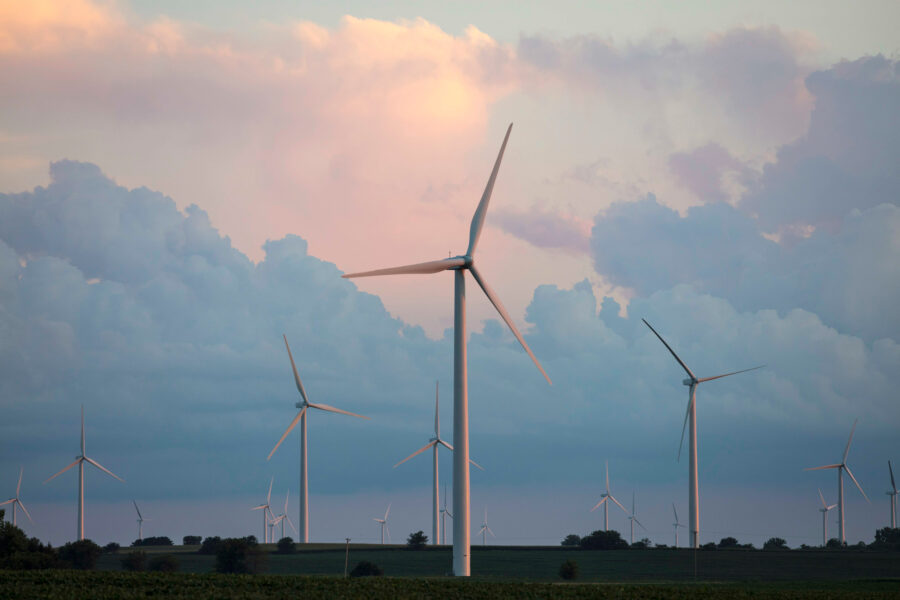Babies born near hydraulic fracturing sites are 25 percent more likely to have a low birth weight than those born only a few kilometers away, a new study of more than 1 million births in Pennsylvania’s Marcellus Shale region concludes.
The study, published Wednesday in the journal Science Advances, provides some of the most compelling data to date linking the process of hydraulic fracturing to negative health effects. It found that babies born within 3 kilometers of fracking sites were less healthy than those born farther away, and that babies born within 1 kilometer saw the largest effects.
“We have pretty good evidence of a causal effect of health outcomes and fracking—not just a correlation,” said lead author Janet Currie, a professor of economics and public affairs at Princeton University.
Hydraulic fracturing—known as fracking—has transformed energy production in the United States, resulting in a boom in unconventional natural gas production and lowering the cost of energy. But as it has spread, those living close to production sites have raised concerns about the potential for water and air pollution. Some people living close to fracking operations have said that they believe it has made them sick, but those links have been hard to conclusively prove.
“It’s surprising, a decade after this all started, that we don’t have much data,” said Robert Jackson, a hydrogeologist at Stanford University who was not involved with the study. “We still have so little information about air quality and water quality monitoring around these sites.”
Currie’s study took a novel approach—it analyzed the vital statistics records for more than 1.1 million births in Pennsylvania between 2004 and 2013. It was during that period that fracking took hold across the Marcellus Shale, bringing an economic boom to some communities, while also bringing fears about how the process could impact health.
The authors looked at health measurements including low birth weight (less than 2500 grams), prematurity, congenital abnormalities and other abnormalities for babies born to women living within 15 kilometers of a fracking site—both before and after fracking began—and then compared those living close, at 1, 2 and 3 kilometer intervals, with those living farther away.
Being able to compare babies born in the same community but living at different distances from fracking wells was key, Currie said. “They have the same racial composition, the same education—it’s all people living in rural areas, for the most part. So we’re comparing apples to apples,” she said.
In some cases, the researchers were actually comparing babies born to the same woman. Of the records examined, 594 of the infants born within 1 kilometer of a fracked well had a sibling who was born before fracking began, allowing the scientists to compare the birth weights among children born to the same mother. A larger group, 3,538 infants, lived between 2 and 3 kilometers from a well and had an unexposed sibling.
Babies born at a low birth weight face a number of risks. The study lists infant mortality, attention deficit hyperactivity disorder, asthma, lower test scores, lower schooling attainment, lower earnings and higher rates of social welfare program participation, among them.
Air, Water, Stress: Cause Is Less Clear
Despite the statistical link that the study found between proximity to fracking sites and birth weight, a number of questions remain—first and foremost, Jackson said, is what aspect of the process contributes to the low birth weight?
“They don’t know what causes the apparent effect,” Jackson said. “It could be air quality issues, it could be dust from roads, it could be water issues, it could be stress.”
Jackson’s work has taken him to Pennsylvania to research air quality around wells. In the course of that work, he said he visited hundreds of homes near fracking wells where he saw another effect that could impact a pregnant woman’s health—high levels of stress. “I’ve seen headaches, gastrointestinal problems, people who are emotionally distraught, people who break down and cry when you have a conversation,” he said. “The ironic thing is, if you’re afraid, fear can have a health effect even if what you’re afraid of doesn’t—though I’m not saying there isn’t.”
The industry group Marcellus Shale Coalition disputed the findings and questioned the study’s methodology, including the fact that actual exposure levels were not measured—something that the study acknowledges.
Researcher Suspects Air Pollution
Currie and her co-authors acknowledge that the study leaves unanswered the question of what causes the negative health impact. But Currie has a hunch.
“We think that given the pattern of results that we see, it’s more likely to be air pollution than water,” she said. That’s because the impacts are so localized. Air pollution tends to dissipate as it gets further from the source, much like the health impacts that Currie and her co-authors found.
Another question is whether that air pollution might come from the fracking process itself or from the trucks and machines that are required to make it work.
“What would be really useful to try to unpack these effects more would be more studies where we measure near fracking sites to see what can be detected in the air,” she said.
In addition to the public health implications of the study, Currie said she thinks there are policy implications. Because the effects the study documents are so localized—after 3 kilometers they essentially disappear—Currie said decisions about where to place wells could have a big impact. “It could mitigate the health effects,” she said.














